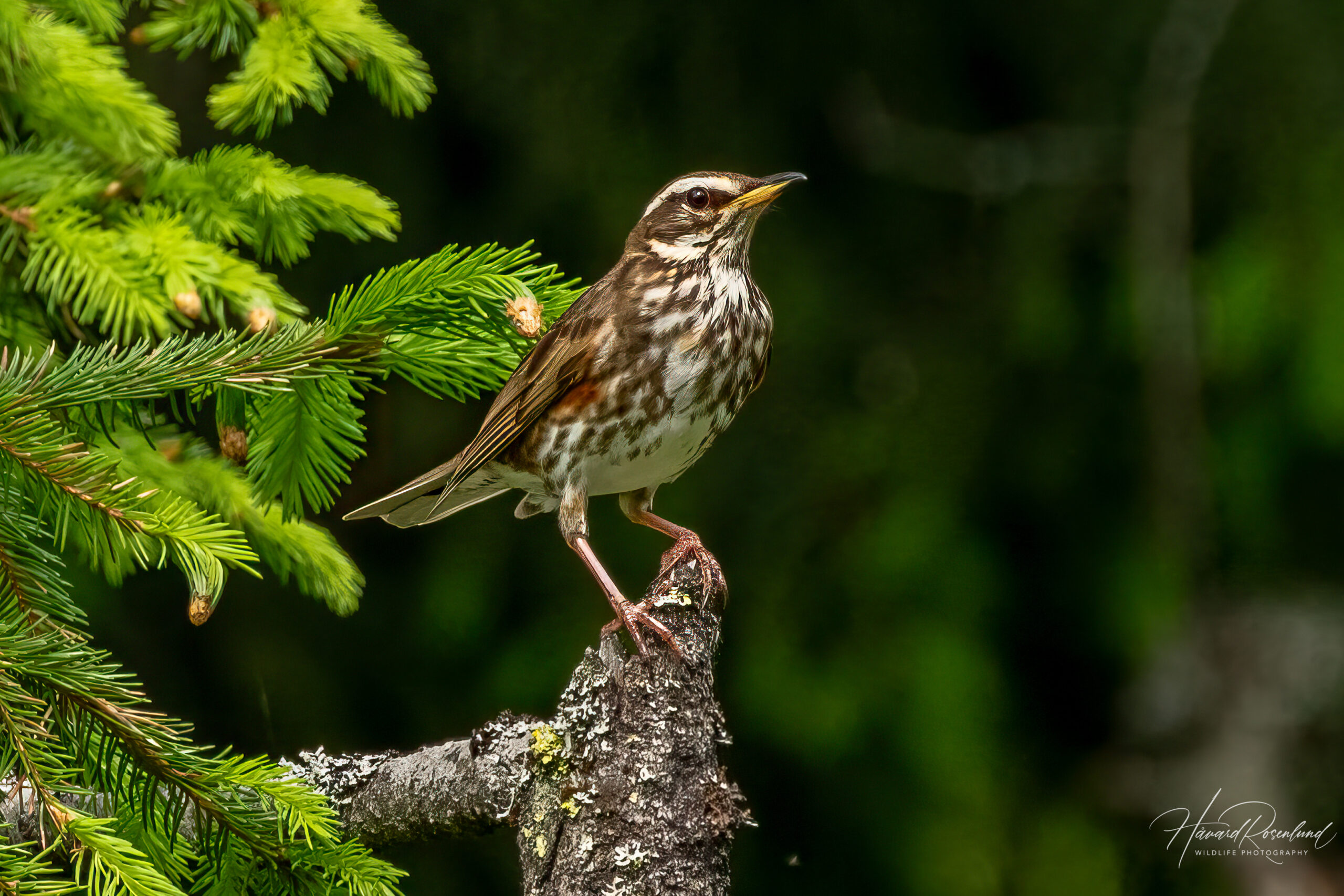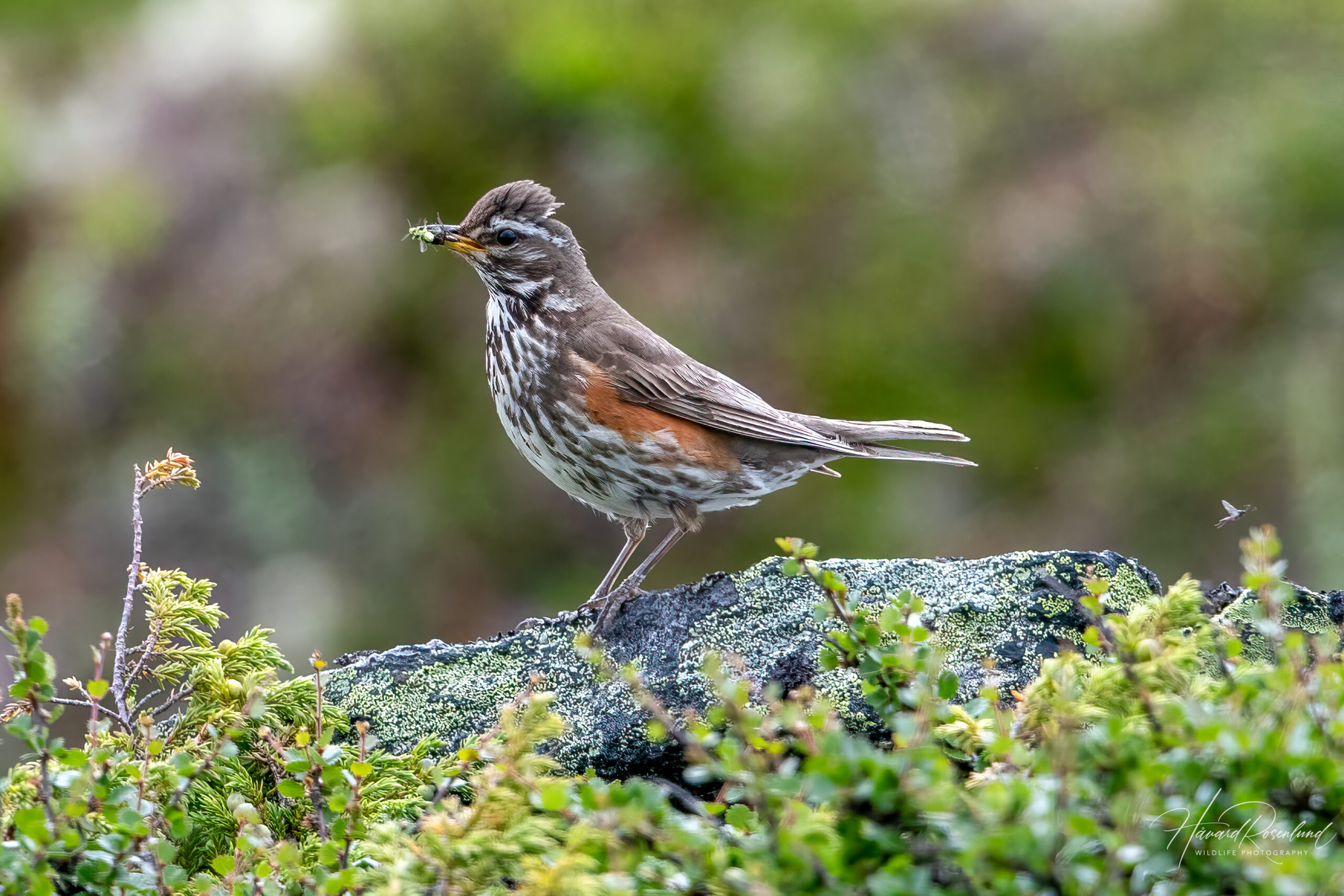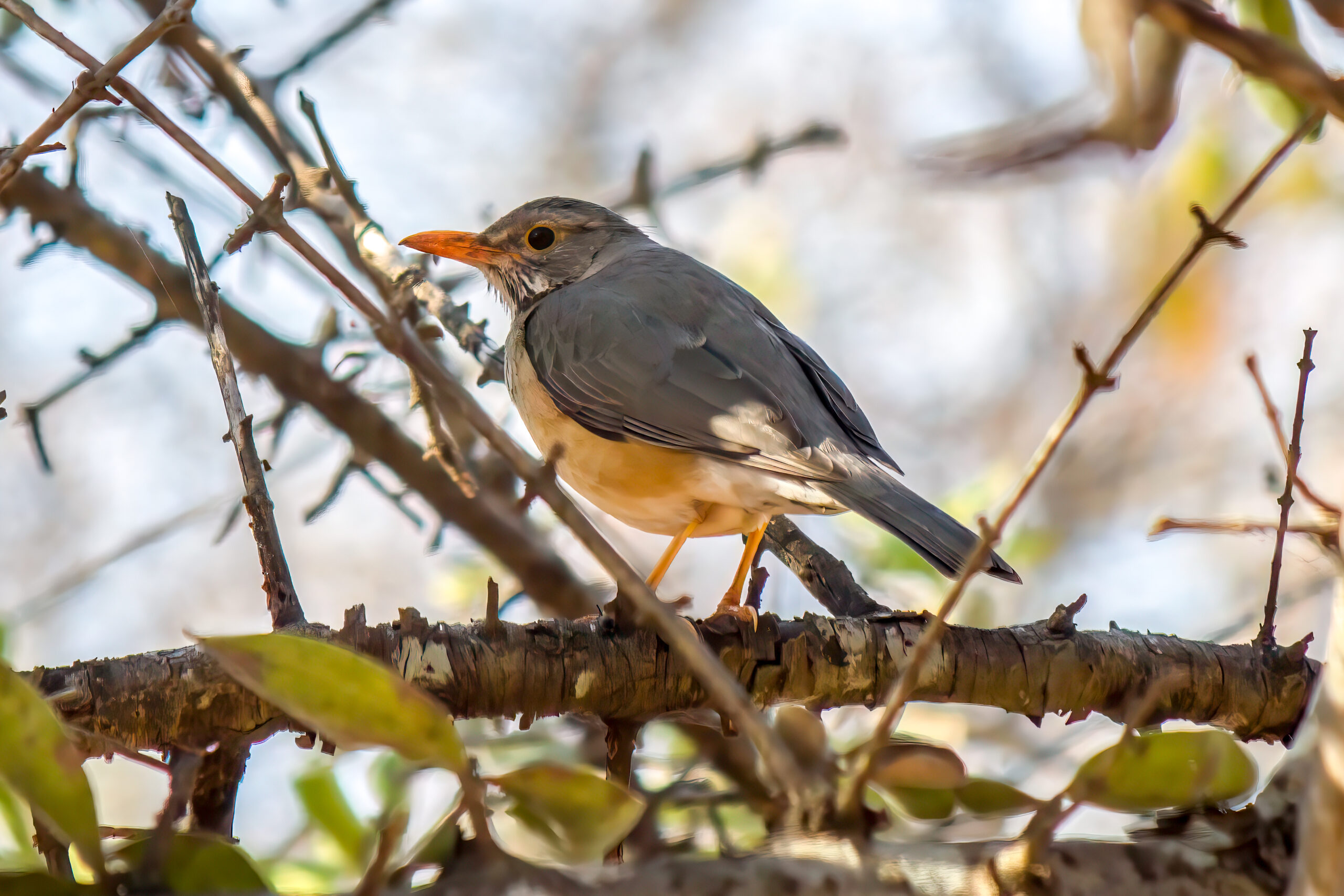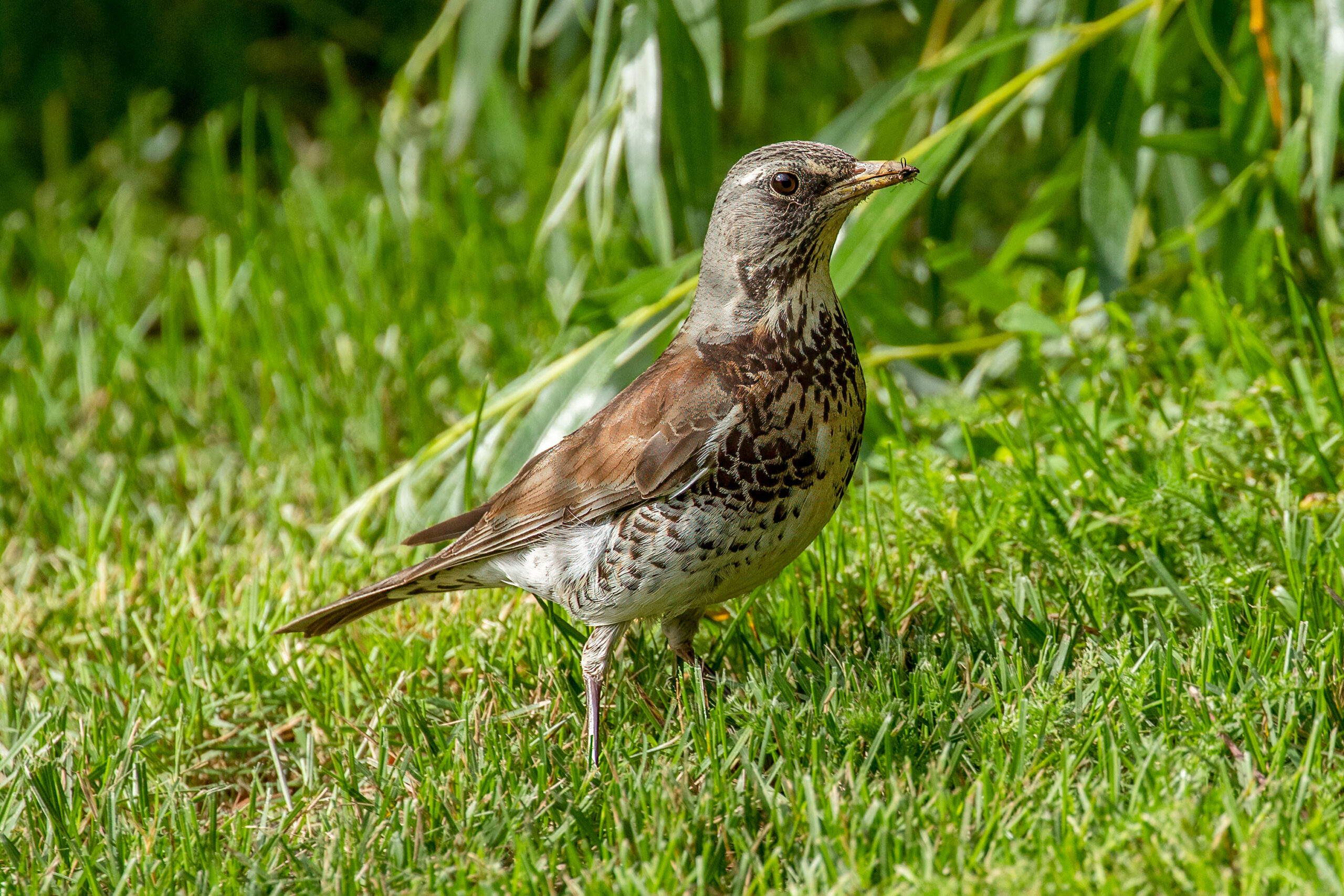Description
The redwing (Turdus iliacus) is a medium-sized thrush, recognizable by its reddish flanks and underwing, dark brown upperparts, and a prominent creamy stripe above the eye. It measures about 20-24 cm (7.9-9.4 in) in length, with a wingspan of 33-34.5 cm (13.0-13.6 in). Male and female redwings are similar in appearance, though juveniles may have a more spotted chest. The redwing has a distinct, fluid and simple song, with a pattern that varies slightly between different localities. Expert birders might tell where a redwing is from, just by listening to its song pattern. This species can be distinguished from similar thrushes by its smaller size, the reddish underwing, and its distinct vocalizations. Its range extends across Europe and Asia, with its breeding grounds primarily in the northern regions and wintering areas further south.
Diet & habitat
Redwings inhabit a variety of environments, including woodland edges, gardens, and hedgerows. They show a preference for open landscapes with scattered trees and bushes during migration and in their wintering grounds. Their diet consists mainly of invertebrates during the breeding season, including worms, snails, and insects. In autumn and winter, they switch to a diet of berries and fruits, which can lead them into more urban areas or gardens where these food sources are abundant. In winter, redwings often form mixed flocks with other thrush species, such as fieldfares (Turdus pilaris), searching for food together.
Migration
The redwing is a migratory bird, with most populations traveling south to spend the winter in warmer climates. Migration typically begins in September and October, with the birds returning to their breeding grounds in March and April. The migration journey is often undertaken at night, where their distinctive “seep-seep” call can be heard as they fly overhead in flocks.
Nesting
Breeding season for redwings starts in late April or May, depending on the latitude. They are monogamous during the breeding season and prefer nesting in trees or bushes, where they construct a cup-shaped nest made of grass, moss, and mud. A typical clutch consists of 4-6 blue-green eggs, which are incubated primarily by the female for about 12-14 days. The fledglings leave the nest approximately two weeks after hatching but remain dependent on their parents for food for another two weeks.
Status
The redwing has a large populations and is widespread, but its numbers have possibly declined by more than 30% across its distribution over the past 15-20 years. It is therefore listed as near threatened on the IUCN Red List. There are several factors that may be contributing to this decline, including climate change, which affects its northern breeding grounds, a reduction in preferred habitat due to overgrazing by cattle, as well as illegal trapping in the Mediterranean.











